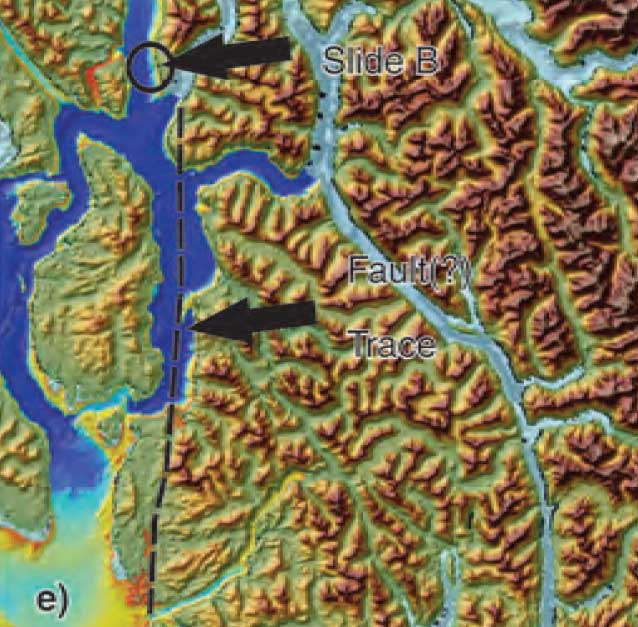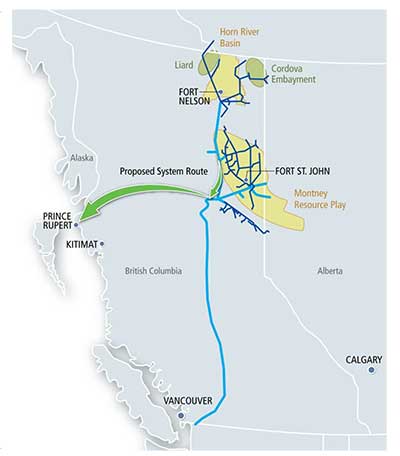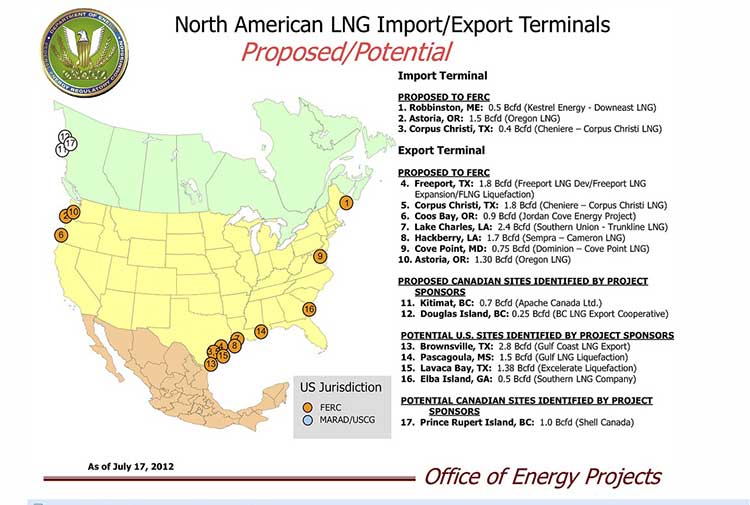At the District of Kitimat Council meeting on Monday, October 1, as part of Mayor Joanne Monaghan’s regular “good news” briefing, she told council that the Kitimat LNG project continues to “progress positively.” The news from Calgary on Tuesday, however, was not as promising.
Both Bloomberg News and the Calgary Herald reported that Apache, which owns 40 per cent of the KM LNG partnership is worried about a recent decision by a rival gas company to sell natural gas to world markets at low North American prices rather than, as been customary up until now, as percentage of the world oil price. That differential gives the North American gas companies a profit in Asia and it is that profit difference that makes Kitimat attractive for LNG projects.
At the council meeting, Monaghan reported, quoting Apache’s Apache’s Manager of Public and Government Affairs Natalie Poole-Moffatt, as saying that Kitimat LNG will be opening a full time community office in downtown Kitimat near the City Centre mall in the near future. Apache says renovations are nearly complete and they will be holding an open house in the near future.
Monaghan said that work on the Kitimat LNG site at Bish Cove continues with blasting to create proper elevation, crushing and sorting of rock and constructing an access route to the forest service road. This summer work began on the two year $25 million upgrades to the old forest service road “which will improve conditions on the road.”
However, in Calgary, the Herald quoted KM LNG vice-president David Calvert as saying “things are going so well that it has been decided to risk spending on clearing ground before completion of the front end engineering and development study and final investment decision.”
But according to several media reports, Calvert told an Energy Roundtable in Calgary on Tuesday that a final go-ahead for Kitimat LNG is not a done deal. the Herald quoted Calvert as saying: “We remain convinced that oil-linked pricing is critical to the viability of our Canadian LNG industry.”
Bloomberg reported that a recent deal by Cheniere Energy Inc. to sell liquefied natural gas based on North American pricing (also known as Henry Hub pricing) means that it is difficult for Apache to find Asian customers to sign the long term LNG contracts needed to make the Kitimat project viable. (Asian LNG prices are based on the “Japan Customs Cleared Price” set by the Japanese government as a percentage of the price of crude oil).
Bloomberg quoted Calvert as saying: “It created quite a ripple through the marketplace,” and Bloomberg said, the Cheniere deal has created “unrealistic expectations.”
Related
Globe and Mail
Canadian gas producers dreaming big – again
Canada losing the race to sell LNG
Updated
The Haynesville Shale
Cheniere Deal Hurts Canadian LNG Project
Cheniere is less sensitive to prices given its role as a middleman, while Apache, Encana and EOG are producers, for whom the price is very important. One advantage of Kitimat is its west coast location, but that is only a minor cost advantage over Gulf Coast facilities.
The clock is ticking on Kitimat. It sounds like Asian buyers are sitting on the sidelines waiting for lower prices. Right now the U.S. government is sitting on future LNG approvals pending the release of a study around year-end. If the U.S. approves the pending applications, a proverbial flood of LNG will come to market with Henry Hub-based pricing. At that point Kitimat’s owners will be in a tough spot. Kitimat is vital to B.C., but the economics might not work.
Wall Street Journal
Cheniere Lights a Match in the Gas Market
Minor oil leak at Bish Cove
In a report to District of Kitimat Council, Apache’s Manager of Public and Government Affairs, Natalie Poole-Moffatt, also reported that on September 19, an oil leak was spotted on a piece of heavy equipment at Bish Cove. The report says;
WestCoast Marine was notified and booms were deployed as a preemptive measure in Bish Cove, no machine oil has migrated to Bish Cove. Environmental crews are on site executing a remediation plan. Both the [BC] Provincial Emergency PLan (PEP) and Aboriginal and Northern Affairs Canada were notified of the incident.
The piece of equipment is currently being repaired and will undergo operational tests to ensure the equipment can function without further concern. Environmental staff will remain on the site 24/7 until remediation is complete.














